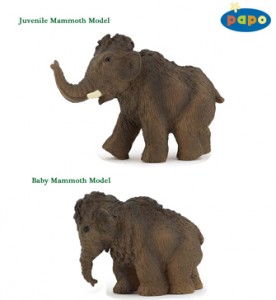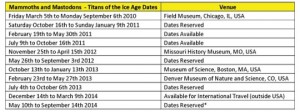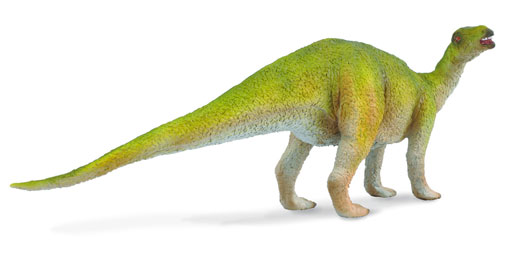New Study shows Subtle Differences between Ancient and Modern Koalas
One of the iconic animals of Australia, the cute and cuddly Koala bear is having a prehistoric makeover as a result of a new study into prehistoric Koala specimens. Firstly, although commonly referred to as a “bear” the Koala is not, indeed there are no bear species that are native to Australia. The extant Koala (Phascolarctos cinereus) is an endangered species in Australia. Some still live in the wild but most can be found in protected wildlife areas. Once hunted for their fur, these sedentary animals spend most of their lives in the trees and eat almost exclusively the leaves of the eucalyptus tree.
The word Koala was believed to have been derived from the aboriginal for “I do not drink”, these marsupials related to the Wombat group, seem to get all the moisture they need from eating eucalyptus, although this word derivation has been questioned.
Prehistoric Koala
New research published in the scientific publication “The Journal of Vertebrate Palaeontology”, contrasts the fossilised species of Koala with their modern counterparts. By the late Palaeogene, Australia had become isolated from the rest of the world, leaving the marsupials that dominated the mammal based element of the ecosystem to thrive without competition form placental mammals. As Australia continued to drift north (it is still moving northwards today), the humid warm conditions began to change and the continent became much drier. The rainforests began to shrink and many animals had to adapt to the new environmental conditions.
This led to a number of adaptations in the Koala genera leading to distinctive differences between extinct and extant Koala species as published in a joint research paper by the University of New South Wales’s School of Biological, Earth and Environmental Sciences and CSIRO. CSIRO is the Australian Commonwealth Scientific and Research Organisation.
A Shift to a Diet of Eucalyptus
The scientists report that a shift to an eucalyptus diet was probably caused by the change in the climate as Australia moved north. In the drier conditions it was the Eucalypts that became the dominant tree genera in many areas. Coping with the new diet caused adaptive changes in the Koala digestive and anatomical structure, as these herbivores adapted to their tough diet. Differences in the appearance of skulls between extant Koalas and their ancient ancestors, have been revealed with the research team comparing the skulls of modern animals with those found at the Riversleigh Formation in Queensland.
Dr Julien Louys of the University of New South Wales commented:
“In order to accommodate both mechanical demands of their new diet, as well as maintaining their auditory sophistication, the Koala underwent substantial changes to its cranial anatomy, in particular the facial skeleton”.
Ancient Koala
The study of ancient Koala fossils dating from the Oligocene and Miocene epochs indicate that the Koala group diversified from the Wombat family some 40 million years ago. The Koalas are members of the Diprotodontidae Order, named by Sir Richard Owen (he who coined the term Dinosauria), in 1866. The modern Koala is the sole survivor of the Phascolarctidae Family.
A number of prehistoric genera of Koala are known in the Australian fossil record, two of which from the Miocene and Pliocene epochs do not share the modern Koala’s trait of being almost exclusive eucalyptus feeders.
Fossils of Koalas are extremely rare, most genera are known from fragments of skull, jaw bones and fossilised teeth. As ancient Koalas lived in woodlands the chances of them being preserved as fossils was extremely small.
The researchers drew their conclusions about the changes to Koala diets and lifestyles after making a detailed study of the possums and extant/extinct Koala species. The two fossil species analysed (Litokoala kutjamarpensis and Nimiokoala greystanesi) have been found at the Riversleigh site and although there are similarities between ancient and modern species there are substantial differences in the teeth, palate and jaws.
Vocalisation in Prehistoric Koalas
The researchers believe that the prehistoric Koalas also shared with their modern cousins the ability to produce loud “bellows” based on similar large bony prominences — the auditory bullae — that enclose structures in the middle and inner ear. However the auditory bullae of the extinct Nimiokoala and Litokoala species are not as exaggerated as in the modern koala, according to team member Professor Mike Archer.
Professor Archer stated:
“Modern Koalas are extremely sedentary and vocal animals. They produce low frequency vocalisations that pass through vegetation and can be heard up to 800 metres away, far exceeding the home range limits of male Koalas. The fossil Koalas share similar large bony ear structures to the modern Koala and would have been well adapted to detecting vocalisations in the rain-forest environment of Riversleigh in the Miocene era.”
The unique structure of the skull of the modern Koala is a result of having to compromise in terms of evolutionary adaptations between the need to vocalise and change to a tougher diet of eucalyptus leaves claim the researchers.
Everything Dinosaur stocks a range of prehistoric mammal models: Models of Prehistoric Mammals.









